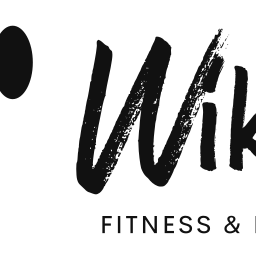Fitness for Busy Professionals: How to Stay Active and Healthy in a Demanding Work Environment
Discover how to balance fitness with a busy professional life. This blog provides practical strategies, explores the science behind exercise and productivity, and shares resources to help you stay active and healthy amidst career demands.

We find ourselves apparently bound to our desks, computers, and the never-ending list of activities needing our attention in the fast-paced, constantly changing panorama of the modern professional world. Unfortunately, this fast-paced way of life offers few opportunities for many professionals to maintain their personal well-being and physical fitness. But what if we could redefine this narrative? What if we could intelligently weave fitness into the fabric of our demanding work lives, not as an intrusion, but as an essential counterpart to our success?
Welcome to the intersection of professional ambition and personal health. This blog guides you to maintain a healthy lifestyle while thriving in a demanding work environment. "Fitness, or Busy Professionals: How to Stay Active and Healthy in a Demanding Work Environment" is more "than just a conversation about workouts and meal plans. It's about cultivating a mindset of overall wellness that can coexist with and amplify your professional success.
You may incorporate exercise into your everyday routine by using practical advice, effective tactics, and science-backed insights in the parts that follow. We'll show you how to make the most of your time, develop resilience, and provide a setting that promotes overall good physical and mental health. Our trip will dispel common misconceptions and transform the way you think about fitness in the context of a demanding work life.
So whether you're a top executive facing a calendar crammed with meetings, an entrepreneur juggling multiple ventures, or a passionate professional navigating the hustle of the corporate world, this guide is for you. Let's embark on this journey together - reshaping our routines, reformulating our daily habits, and redefining what it means to be a busy professional in a health-conscious world. Let's turn the impossible into the achievable because your health is not a luxury—it's the foundation of your success.
The Impact of a Sedentary Lifestyle
In the complicated world of contemporary professional pursuits, many discover themselves ensconced in the seemingly comfortable yet insidiously damaging cocoon of sedentary labor. This reality is characterized by hours on end hunched over desks, transfixed by the hypnotic glow of digital screens, and largely devoid of substantive physical exertion. The fallout from this sedentary phenomenon is an alarming degradation of our comprehensive health profile.
Occupations of a passive nature, typified by extended durations of stationary posture or low-grade physical engagement, are intimately tethered to a compendium of health adversities. A perusal of contemporary scientific literature reveals that sedentarism correlates with heightened obesity, cardiovascular disorders, type 2 diabetes, and various cancers. A seminal study published in the "Annals of Internal Medicine" even posits an association between protracted sitting and an elevated risk of premature mortality, irrespective of additional physical exercise habits.
Moreover, passive conduct can precipitate adverse mental health outcomes. For example, a burgeoning body of evidence suggests that extended physical inertia can increase depression, anxiety, and other mental health disturbances. This is further compounded by the propensity of high-stress occupations to foster suboptimal dietary selections and irregular sleep regimes, accentuating these health detriments.
To underscore the gravity of this issue, let's explore a pair of illuminating case studies that starkly portray the toll of an intensive professional existence on personal health.
Case Study 1
Our inaugural case study introduces us to Jane, a high-flying attorney in her mid-40s. Despite her professional accolades, she found herself locked in a struggle with obesity, hypertension, and pervasive fatigue - the consequences of her relentless 10-hour workdays largely immobilized in meetings or chained to her desk. Moreover, the relentless march of her professional commitments left scant room for exercise or even rudimentary physical movement. However, a comprehensive recalibration of her health habits, encompassing dietary modifications and the integration of regular physical movement, ultimately manifested a marked upswing in her overall health indicators.
Case Study 2
In a parallel scenario, we encounter Robert, a software engineer in his early 30s. The intersection of Robert's physically inert occupation, protracted working hours, and pervasive stress ushered in the emergence of type 2 diabetes and anxiety. A watershed moment arrived when he confronted the harmful implications of his lifestyle on his health. Aided by the counsel of a healthcare professional, Robert embarked on a journey of incorporating sporadic physical activity into his routine, adopting more nutritious dietary habits, and utilizing mindfulness strategies to manage stress. Within a year, he stabilized his blood glucose indices and reported enhancements in his mental well-being.
These case studies elucidate the significant and potentially life-threatening ramifications of a vigorous professional life on personal health. Yet, simultaneously, they underscore the powerful potential of integrating healthier routines and carving out space for regular physical activity, even amidst the whirlwind of a high-demand professional environment, to substantially offset these risks.
The pernicious influence of a sedentary existence represents a contemporary health crisis lurking beneath the surface of our everyday lives. As driven professionals, the onus lies with us to acknowledge these risks and to proactively chart a path towards a healthier, more physically engaged lifestyle.

The Science Behind Exercise and Productivity
In the labyrinth of today's high-octane professional landscape, a harmony between the relentless rhythm of career responsibilities and the serene melody of personal well-being is non-negotiable. This harmonious symphony finds its conductor in the delicate dance between physical activity and productivity. As our collective wisdom of the human constitution and its cognitive landscape broadens, a growing anthology of research is painting an increasingly detailed picture of how exercise acts as a secret weapon in supercharging our professional prowess.
Let's decode the enigma that encapsulates the symbiotic relationship between physical activity and productivity. The narrative begins in the fascinating theater of neuroscience. Embarking on a journey of physical activity, our bodies become a biochemical factory, producing endorphins - these are the mind's natural anesthetics and mood enhancers. This biochemical ballet accounts for the invigorating sense of vitality and upbeat frame of mind that we often experience post-exercise.
However, the endorphin story is just the overture to a grander symphony. The act of exercising also sparks the manufacture of a protein known as brain-derived neurotrophic factor (BDNF). This molecular maestro nurtures the health of existing brain cells, spurs the development of new ones, and crucially, fosters synaptic plasticity - our brain's remarkable ability to reshape its neural networks. Simply put, consistent exercise can keep your brain in top gear, primed for adaptability and ready to grapple with intricate tasks.
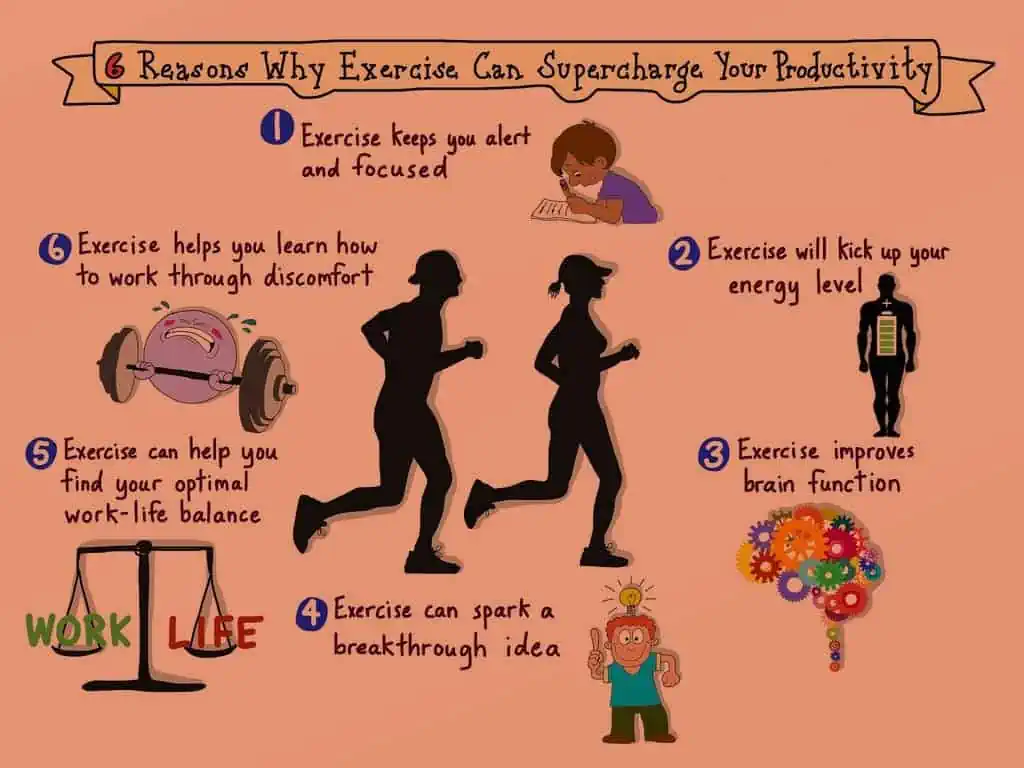
Moreover, physical exertion amplifies the circulation of blood to the brain, boosting the supply of life-sustaining oxygen and nourishing nutrients to this indispensable command center. This cerebral blood rush can lead to an uptick in cognitive prowess, including sharper focus, more robust memory, and enhanced problem-solving capabilities - an ensemble of traits that are instrumental to soaring productivity in our work lives.
The mental health dividends of a physically active lifestyle are as monumental as the physical ones. Regular physical exertion has been shown to be a potent weapon in mitigating symptoms of mental health conditions such as depression, anxiety, and stress. It serves as a natural mood booster, curbing feelings of melancholy or depression by inducing the production of serotonin - our body's personal 'happiness' hormone. This not only helps in tempering emotional fluctuations but also cultivates mental fortitude, enabling individuals to better weather workplace stressors and sustain a positive mindset.
Furthermore, a consistent exercise regimen has been confirmed to enhance sleep quality, a variable that is inextricably linked to mental health. Restorative sleep refreshes the mind and body, elevating mood, cognitive function, and overall energy levels, thereby directly fuelling our productivity.
Physical activity also offers a conduit for managing stress effectively. It allows for the release of pent-up tension and serves as a constructive outlet for work-related pressures. This therapeutic dimension of physical activity nurtures emotional equilibrium, which in turn, can substantially fortify workplace productivity.
In summary, the relationship between physical activity and productivity is intricate, undeniable, and multifaceted. Regular exercise impacts our brain's functioning, mental health, and emotional resilience in profound ways, all of which are vital cogs in the machinery of productivity in our demanding professional lives. Hence, for busy professionals aiming to stay agile and healthy, weaving a regular fitness routine into your agenda isn't just beneficial – it's a must.
Time Management for Exercise
As an individual juggling the demands of a high-paced career, the scarcity of time might present a daunting obstacle to incorporating exercise into your routine. Nonetheless, weaving physical activity into your day's tapestry is paramount. Exercise is a conduit to enhanced physical and mental well-being, a potent antidote to stress, and a powerful lever for boosting productivity.
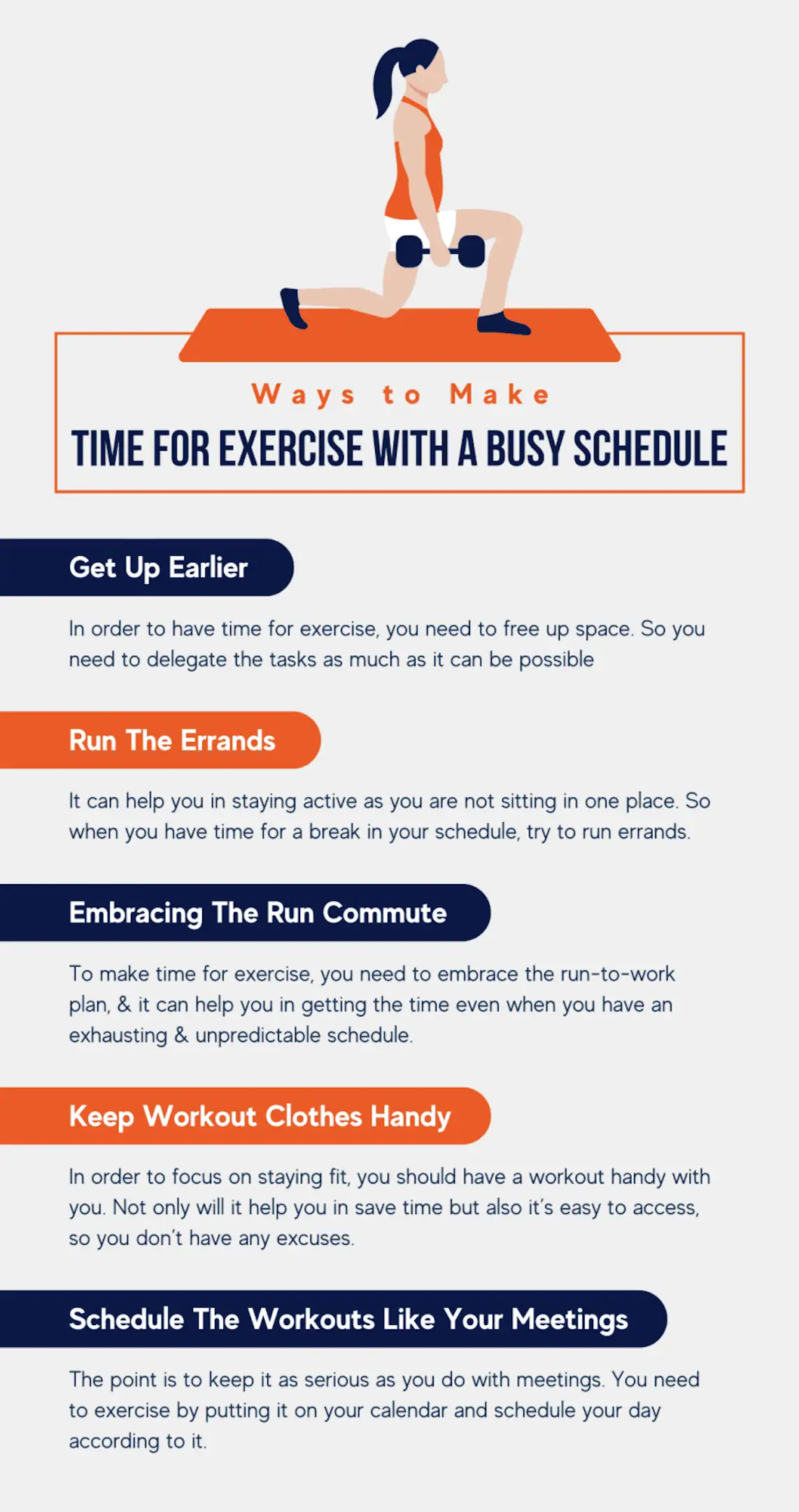
Finding the time: Assessing your schedule
Your journey towards embedding exercise into your routine commences with a thorough analysis of your daily schedule. Survey the rhythm of your typical day and pinpoint potential pockets of time that can accommodate bouts of physical activity. Here are some propositions:
- Greet the dawn with a workout before the hustle and bustle of the day begin.
- Transform your lunch break into a brisk walk or run.
- Dedicate post-work hours or weekend stretches to physical activity.
- Seek a gym or fitness class near your workplace or residence.
- Engage in-home workouts with the help of fitness DVDs or digital video platforms.
Strategies for integrating exercise into a busy routine
Once you've identified potential temporal space for exercise, you need to strategize seamlessly integrating it into your hectic lifestyle. Here are some pointers:
- Cultivate it as a habit. As with any habit, frequent engagement in exercise strengthens its roots in your routine, making it as natural as your daily ablutions or dressing up.
- Embrace realistic objectives. Steer clear of overambitious goals at the onset. Instead, initiate a few minutes of daily exercise and gradually ratchet up the duration.
- Seek activities that spark joy. The sustainability of your exercise routine hinges on your enjoyment. Discover activities that are stimulating and delightful.
- Procure an exercise ally. Enlisting a friend or family member for shared workout sessions can fortify motivation and accountability.
Tips on consistency and commitment
The key to reaping the benefits of exercise lies in unwavering consistency and commitment. Here are some suggestions to maintain your trajectory:
- Enshrine your workouts. As with any vital appointment, inscribe your workouts in your calendar. This practice elevates exercise to a priority.
- Inject a dose of challenge. Establish targets and monitor your progress. This element of challenge can fuel motivation and adherence.
- Indulge in rewards. When you conquer a goal, indulge in a self-gratifying reward. This can bolster motivation and dedication to your exercise regimen.
Physical activity is a cornerstone of a healthy lifestyle. With the guidance provided above, you can navigate the temporal constraints of a demanding career, carving out time for exercise and integrating it seamlessly into your daily life.
Efficient Workouts for Busy Professionals
Navigating the maze of professional commitments, social obligations, and perhaps familial responsibilities as a busy professional, you're no stranger to the relentless ticking of the clock. So finding the opportunity to integrate an effective, time-efficient workout into your jam-packed schedule can seem like a Herculean task.

However, there's light at the end of the tunnel: a plethora of fitness routines exist that cater to your need for time optimization, facilitating an active and healthy lifestyle without monopolizing your day. Here's a primer:
Understand HIIT (High Intensity Interval Training)
HIIT acts as a time-efficient fitness panacea, encompassing short intervals of high-octane activity interspersed with concise rest periods. Its potency lies in calorie incineration and cardiovascular health enhancement. For example, a prototypical HIIT workout could entail 30-second sprinting bouts, followed by 90-second rest intervals, cycled for 10-15 minutes.
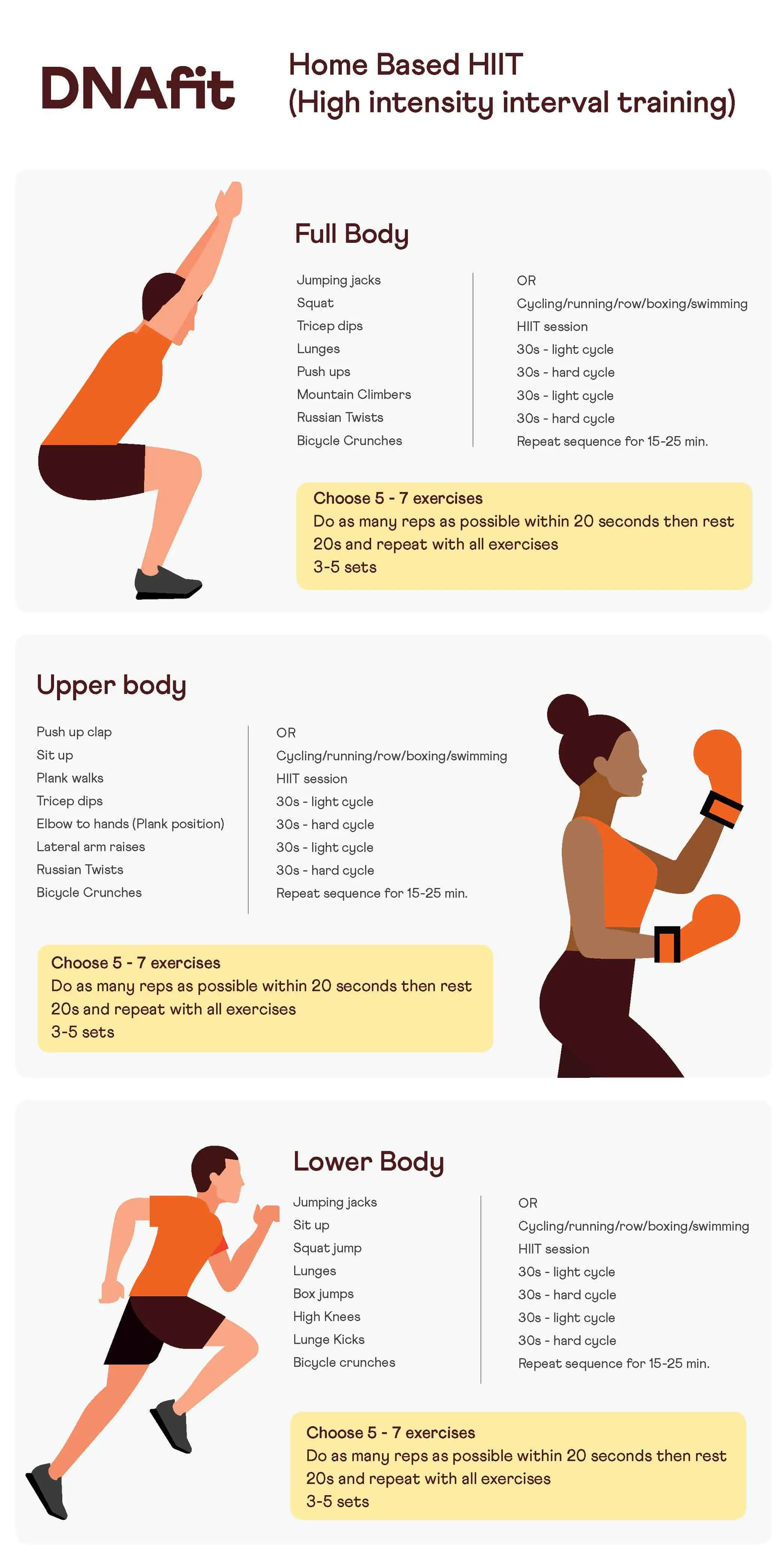
Benefits of Resistance Training
Resistance training serves as an excellent avenue for maintaining fitness. This form of training employs weights or body weight as resistance against movement, contributing to muscle development, bone density improvement, and metabolism acceleration. A rudimentary resistance training routine might encompass three sets of 10-12 repetitions of each exercise.
Incorporating Yoga and Stretching for Flexibility and Stress Management
Yoga and stretching form a potent duo for flexibility enhancement and stress reduction. Additionally, yoga aids in refining balance and coordination. An archetypal yoga session could involve holding a series of poses for a few breaths each. With its myriad forms, stretching can be performed at any moment, adding to its appeal.
Case Studies: Successful Exercise Regimens for Busy Professionals
Here's a glimpse into some efficacious fitness protocols tailor-made for busy professionals:
- A 30-minute HIIT workout, thrice weekly
- A 20-minute resistance training session, thrice weekly
- A 15-minute yoga routine, twice weekly
- A 10-minute daily stretching ritual
These illustrations merely skim the surface, and the frequency and duration of your workouts can be customized to dovetail with your unique needs and time constraints. The linchpin is to discover a workout regimen that resonates with you and is sustainable in the long run.
By embracing these guidelines, you can remain active and healthy without compromising your bustling lifestyle.
Nutrition for the Busy Professional
As a career-driven individual, navigating the tumultuous seas of maintaining a healthy diet amid the whirlwind of professional responsibilities can appear daunting. Nevertheless, the balance in our meals acts as the cornerstone in supporting our energy quota, sharpening mental acuity, and preserving overall health. So let's explore how to incorporate wholesome eating habits seamlessly into a hectic schedule:
The importance of a balanced diet in fitness
The harmony in your diet, a balance that equips your body with indispensable nutrients, is a non-negotiable requirement for optimal functioning. This dietary equilibrium includes a colorful palette of fruits and vegetables, nutrient-dense whole grains, lean protein, and healthful fats. A diet that respects this balance can champion weight management and mood enhancement and fortify your defenses against chronic ailments such as cardiovascular diseases, stroke, and cancer.

Preparing healthy meals with limited time: Meal prep strategies
To circumnavigate the challenge of healthy eating on a tight schedule, 'meal prepping' is your secret weapon. This strategy entails the preparation of meals, ensuring they're ready to fuel your body when time is scarce. This liberates precious time and energy during the workweek and empowers you to make health-centric choices.
Numerous meal prep methodologies are at your disposal. A common tactic is to dedicate part of your weekend to cooking an ample quantity of food, which is then partitioned into manageable portions for consumption throughout the workweek. Alternatively, you may prefer to cook individual meals in advance, freezing them to be revived and savored at your convenience.
Regardless of the meal prep approach you adopt, the pivotal aspect is to prioritize the preparation of wholesome meals. This necessitates the selection of nutrient-dense foods that will fuel your body with the energy it needs to thrive amid your professional commitments.
Tips for eating out: Making healthy choices at restaurants
When dining out is frequent, strategies exist to ensure your selections align with your health objectives. Here are a few navigational beacons to guide your choices:
- Favor grilled or baked dishes over their fried counterparts.
- Opt for lean proteins such as grilled chicken or fish.
- Substitute a side salad in place of fries.
- Request dressings to be served separately, allowing you to regulate your intake.
- Sidestep sugary beverages like soda and juice.
- Hydrate with water or unsweetened tea instead.
Adhering to these guidelines empowers you to sustain a healthy diet despite dining out.
Incorporating healthy eating habits is a fundamental pillar in supporting a vibrant lifestyle. By employing these strategies, you can seamlessly integrate nutritious eating into your bustling routine.
The Role of Rest and Recovery
Navigating the pressures of a demanding professional landscape often means juggling long work hours, relentless deadlines, and an ever-growing task list. Amid such a whirlwind, not only can carving out time for regular workouts seem Herculean, but the pursuit of ample rest and recovery can feel like an elusive luxury.
Yet, the power of rest and recovery stands equal to, if not surpasses, the potency of exercise in bolstering fitness and productivity. Deprivation of sufficient sleep or rest hinders the body's natural healing mechanism, raising the specter of illnesses, injuries, or even the dreaded burnout.
Dive into this discourse to appreciate the role of sleep and rest in fitness and productivity and garner strategies to embrace more of both.
Understanding the Importance of Sleep
The role of sleep transcends mere physical restoration. It is a cornerstone of both physical and mental wellness. Sleep is when the body undertakes essential repairs, secretes hormones vital for growth and development, and consolidates memories. Moreover, sleep enhances mood, sharpens concentration, and optimizes decision-making skills.
While the general guideline suggests adults require approximately 7-8 hours of sleep per night, individual needs may vary. In addition, symptoms such as fatigue, irritability, concentration difficulties, and mood swings may indicate inadequate sleep.
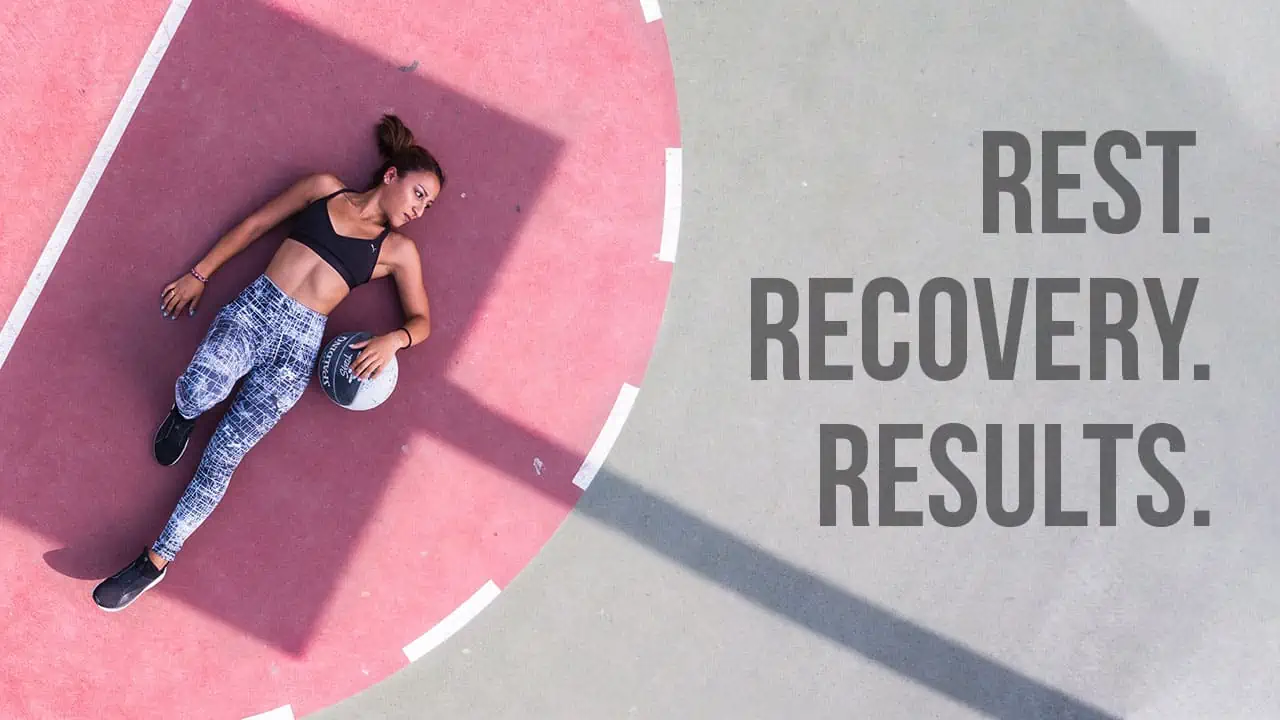
Strategies for Better Sleep Hygiene
A range of effective strategies can be deployed to enhance your sleep hygiene and secure a restful night's sleep:
- Adherence to a consistent sleep schedule, with fixed timings for retiring and waking up, even during weekends.
- Development of a soothing pre-sleep ritual that prepares you for rest. This could entail indulging in a warm bath, reading, or listening to tranquil music.
- Abstaining from caffeine and alcohol before bed, as these substances can disrupt sleep.
- Ensuring your bedroom environment is conducive to sleep - dark, quiet, and cool.
- Avoid daytime napping, which may impede your ability to fall asleep at night.
The Role of Active Recovery and Rest Days
Beyond adequate sleep, your body needs periods of recovery post-exercise. This recovery can be active, involving light activities such as stretching or walking, or it could constitute rest days when you refrain from any exercise.
Active recovery boosts circulation and mitigates inflammation, thereby expediting the recovery process. In addition, rest days allow your body to rejuvenate and avert overtraining fully.
Incorporating rest days might initially seem challenging, but it's critical to tune into your body's signals and allocate the requisite recovery time. Doing so enhances your exercise capacity and accelerates recovery, helping you reach your fitness goals more swiftly.
The value of rest and recovery in maintaining fitness and productivity cannot be overstated. Prioritizing sufficient sleep and active recovery days empowers your body to repair and prevent overtraining. This fortifies your health and strength and sharpens your focus - integral for achieving your fitness objectives and excelling in your career.
Mental Health and Fitness
Occupying the bustling role of a diligent professional, you're well-versed in the intricate dance between your cognitive and human health. Feelings of stress, anxiety, or desolation hinder your work concentration and cast a gloomy shadow on your life beyond professional obligations. However, when you devote energy to nurturing your physical well-being, you're concurrently nurturing your mental well-being.
Connection between physical activity and mental well-being
A burgeoning repository of scientific research underscores the positive influence physical exertion exerts on mental equilibrium. Physical activity triggers the release of endorphins, acting as natural mood elevators. Furthermore, it is a potent antidote against stress, anxiety, and despair. Crucially, physical exertion can enhance sleep quality, an indispensable ingredient for holistic mental health.
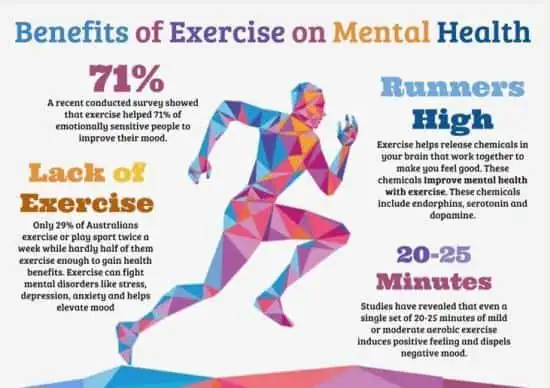
Strategies for managing work-related stress
Alongside physical activity, various tactics can assist in navigating the turbulent waters of occupational stress. These include:
- Deciphering Stress Triggers: The maiden step in stress management involves deciphering your stress triggers. Understanding these enables you to devise effective coping mechanisms.
- Incorporating Breaks: Regular breaks throughout the workday are vital, even if brief. Mobilize, stretch, or inhale some fresh air to rejuvenate.
- Task Delegation: Don't hesitate to delegate tasks if overwhelmed. This strategy liberates time, allowing you to prioritize more critical responsibilities.
- Mastering the Art of Refusal: Feel empowered to decline requests that infringe on your time or that you're unwilling to undertake. Mastery of refusal can safeguard your time and vitality.
- Self-Care: Prioritize adequate sleep, nutritious intake, and regular exercise. These practices bolster physical and mental wellness.
Incorporating mindfulness and meditation into your routine
Mindfulness and meditation, two potent strategies, can significantly augment mental health. Mindfulness signifies being present, engaged, and non-judgmental. Meditation, a mindfulness variant, involves centering on your breath or a mantra. Both practices can significantly alleviate stress, anxiety, and despair.
There are various ways to incorporate mindfulness and meditation into your routine. First, initiate by dedicating a few moments daily to mindfulness. You can also explore guided meditations or applications designed to help focus your attention.
You can elevate your overall well-being and productivity by nurturing your physical and mental health. Thus, carve out time for exercise, stress-alleviation techniques, and mindfulness practices. The rewards will manifest in your personal and professional life.
Conclusion
Navigating the tumultuous waters of maintaining a robust health profile while juggling demanding professional commitments can often seem akin to threading a needle in a storm. The unwavering intensity of professional obligations can frequently usher in an onslaught of stress, exhaustion, and a penchant for less-than-ideal dietary choices. Yet, a constellation of tactics exists at the disposal of the dynamic professional, strategies designed to surmount these hurdles and anchor a lifestyle steeped in health and vitality.
At the heart of this battle is the armor of motivation, often elusive, especially when the tendrils of fatigue and stress tighten their grip. The antidote, however, lies within an assortment of motivation-kindling strategies. These encompass establishing tangible goals, the camaraderie of a workout comrade, and the sweet taste of rewards that celebrate your journey's milestones.
An equally vital stratagem is the cultivation of balance. The quest is to weave the threads of physical activity seamlessly into the fabric of your hectic schedule without causing the threads of work or personal commitments to unravel. This could manifest in the guise of an early bird workout, a midday fitness interlude, or a post-work exercise routine.
The final word in this discourse is the power of the seemingly insignificant. Remember, in fitness, each step is a victory, no matter how minuscule. If a full-fledged workout regimen seems daunting, begin with baby steps, like a leisurely walk or a simple stretching routine. Every droplet of effort contributes to the fitness ocean.
If you find yourself poised at the precipice of a healthier lifestyle, here's a curated roster of key strategies to aid your flight:
- Fashion realistic targets. Steer clear of biting off more than you can chew. Instead, initiate your journey with modest objectives, like a thrice-weekly 30-minute walk, gradually scaling up your fitness quotient as your physical prowess expands.
- Locate a workout ally. A fitness accomplice can amplify your motivation levels and bolster your accountability.
- Embed exercise in your routine. Pencil in your workout sessions in your daily planner, akin to any other non-negotiable commitment.
- Seek out an activity that sparks joy. If your workout doesn't resonate with your soul, your commitment to it may wane. The fitness world is diverse; strive to discover a regimen that challenges and tickles your funny bone.
- Celebrate your victories. When you conquer a fitness milestone, reward yourself with an indulgence that warms your heart. This will fuel your motivation and keep you firmly on your fitness trajectory.
Remaining active and healthy is not merely desirable; it's a cornerstone of holistic well-being. By adopting these strategies, industrious professionals can conquer challenges and embed fitness as an integral part of their lifestyles.
Additional Resources
Recommended Fitness Apps and Online Platforms for Busy Professionals
- Fitbit is not merely a fitness tracker but a holistic health companion. By documenting steps, heart rate, and other crucial metrics, it encourages active lifestyles. With its array of guided exercises and engaging challenges, motivation is kept front and center.
- Nike Training Club is an all-encompassing fitness hub offering diverse workout regimens catering to all fitness levels. It's a treasure trove of video tutorials and enlightening articles to boost your fitness and nutritional wisdom.
- Aaptiv is an innovative fitness solution offering an assortment of audio-guided workouts, encompassing activities like running, walking, yoga, and Pilates. If you're someone who enjoys the accompaniment of music or podcasts during workouts, Aaptiv is your ideal match.
- Daily Burn is an all-in-one fitness platform offering an assortment of on-demand and live workouts, alongside meal plans and nutrition coaching. If you seek a highly customized fitness journey, Daily Burn is the ideal solution.
- Les Mills On Demand brings the expertise of a leading fitness company to your home with a plethora of on-demand workouts. If you're in the mood for exploring various workout styles, Les Mills On Demand is the place to be.
Relevant Books and Studies on the Topic
- The 7 Habits of Highly Effective People by Stephen R. Covey https://en.wikipedia.org/wiki/The_7_Habits_of_Highly_Effective_People
- Eat That Frog!: 21 Ways to Stop Procrastinating and Get More Done by Brian Tracy
- The Power of Habit: Why We Do What We Do in Life and Business by Charles Duhigg
- The Slight Edge: Turning Simple Disciplines into Massive Success by Jeff Olson
- The 4-Hour Body: An Uncommon Guide to Rapid Fat Loss, Incredible Sex, and Becoming Superhuman by Timothy Ferriss
Local and Virtual Communities to Join for Support and Motivation
- Local fitness hubs or gyms typically offer a varied roster of classes and group workouts, forming a vibrant community that can significantly bolster your motivation.
- Virtual fitness communities offer the opportunity to forge connections with like-minded fitness enthusiasts, fostering a sense of camaraderie and mutual encouragement, irrespective of geographical boundaries.
- Your personal social network can also be an invaluable source of motivation and support. Sharing your fitness goals with friends and family can elicit their encouragement, helping you stay the course.
May these expanded resources assist in your journey towards maintaining fitness and health amidst a demanding work environment.


